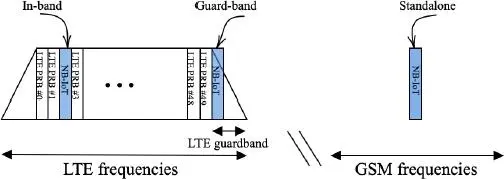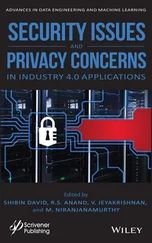1 ...8 9 10 12 13 14 ...17 Many operators worldwide chose the NB-IoT standard from when it was standardized in 2016. Indeed, its properties, inherent to cellular technologies such as flexibility, adaptability, “over-the-air” service updates and cost containment, have of the three main pillars of 5G, that is the massive Machine Type Communication (mMTC) (3GPP 2018a; Narayanan et al. 2018). In fact, accelerated adoption of this standard. According to a study by GSMA Intelligence, the total number of cellular IoT connections should reach 3.5 billion by 2025 (GSMA 2020). According to the same study, 94 commercial NB-IoT networks were listed in 2020. These latter are mainly located in China, where the standard is promised by the manufacturer Huawei. In Europe, Vodafone is the main operator promoting this standard in France, the operator SFR has integrated NB-IoT to its provision since last year.
This adoption of NB-IoT, by operators on the one hand and by manufacturers on the other, has occasioned many applications (Huawei 2017; Ray 2017), particularly in the Industry 4.0 domains, smart measurements, connected cities, monitoring and surveillance, smart agriculture and connected farms, or health.
2.2.2. Transmission principles
As its name indicates, NB-IoT is based on signal transmission over a narrow band. In fact, its spectral occupation is only 180 kHz, which is equivalent to an LTE Physical Resource Block (PRB). Because of this, it results in very low flow rates (at most 250 kbit/s), but these are sufficient for the applications for which this protocol is designed.
NB-IoT technology relies on LTE from which it inherits numerous features and mechanisms, especially at the level of physical and MAC layers. It also re-uses the same numerologies, channel coding, interleaving, etc. This has made it possible to reduce, on the one hand, the time needed to specify this standard and, on the other hand, the costs of developing the NB-IoT devices. However, since the bandwidth used is very narrow, modifications were needed to permit the primary objectives of this standard, that is, the massive use of long-range connections at reduced complexity and cost (Flore 2016).
2.2.2.1. Modes of deployment
As illustrated in Figure 2.2, NB-IoT can be deployed in three different modes: (1) in-band, within the LTE frequency band by substituting it for a PRB; (2) guard-band, by making use of unused spectrum resources, outside the traditional LTE frequency band; or finally (3) standalone, on an independent carrier. In this latter case, GSM frequencies are most often marked for deployment (Wang et al. 2017).

Figure 2.2. NB-IoT deployment modes
The three deployment modes cited above are transparent for non NB-IoT terminals. These consider the neighboring NB-IoT communications as noise.
On the downlink, transmissions are based on OFDM. Each OFDM symbol occupies 12 sub-carriers each of 15 kHz, thus occupying the equivalent of an LTE PRB (180 kHz). Also, in a similar way to LTE, each frame is composed of 10 sub-frames, each of two slots. The durations of the frame, the sub-frame and the slot are 10 ms, 2 ms and 0.5 ms, respectively. Each terminal operates on a Resource Block (RB) formed of seven consecutive OFDM symbols over the whole of the frequency domain. Concerning modulation, only Quadrature Phase-Shift Keying (QPSK) is supported.
On the uplink, transmissions are based on SC-FDMA (Single Carrier-Frequency Division Multiple Access). Two configuration modes are possible: single tone or multi-tone. When single tone is used, the two numerologies 15 kHz and 3.75 kHz are possible. The RU radio resource unit allocated to the terminals corresponds to the deviation from a sub-carrier. We thus have 12 or 48 RU, respectively. In multi-tone, only 15 kHz sub-carrier deviation can be used. The RU can occupy 3, 6 or 12 contiguous sub-carriers. The modulations used on the uplinks are BPSK and QPSK.
The signals and physical channels used in NB-IoT on the uplinks and the downlinks are summarized in Table 2.1 (Savaux et al . 2020).
Table 2.1. Physical channel and signals from the NB-IoT
|
Physical channel/signal |
Function |
| Downlink |
Narrowband Reference Signal (NRS) |
Dedicated to estimating the channel in the frequency domain (provides the reference stage). This signal is transmitted in all the sub-frames except for those reserved for NPSS and NSSS. |
| Narrowband Primary and Secondary Synchronization Signals (NPSS and NSSS) |
Inherited from LTE, these signals are used in discovering the cell via a time and frequency synchronization. They also make it possible to discover the identifier of the NCellID cell, notably via the NSSS. |
| Narrowband Physical Broadcast Channel (NPBCH) |
Transports the MIB-NB (Narrowband Master Information Block). This contains 34 data bits (information useful to the terminal, notably when decoding the SIB1-NB, the activation or not of the ACB, etc.) and 16 bits and CRC. The MIB-NB remains unchanged for a period 640 ms. |
| Narrowband Physical Downlink Control Channel (NPDCCH) |
Controls data transmissions between the base station and the NB-IoT terminal. It transports signaling information that governs these transmissions such as resource scheduling on the downlink, data acknowledgments sent on the uplink, the type of modulation used, etc. |
| Narrowband Physical Downlink Shared Channel (NPDSCH) |
Dedicated to the transmission of data in the direction of the terminal. It transports notably the SIB1-NB (Narrowband System Information Block) and some control information. SIB1-NB contains all the information useful for acquiring the other SIB blocks. |
| Uplink |
DeModulation Reference Signal (DMRS) |
Dedicated to the estimation of the channel in the frequency domain on the uplink. Unlike the NRS, this signal is always multiplexed with data. It is thus only transmitted in the RUs containing the data. |
| Narrowband Physical Random Access Channel (NPRACH) |
Dedicated to transmission of the preamble, which is the first signal transmitted by the terminal, to establish a connection to the network. Details of this channel are given in section 2.2.3. |
| Narrowband Physical Uplink Shared Channel (NPDSCH) |
Used for the transmission both of user data and of control data. The distinction is made using two formats: format 1 and format 2, respectively. |
To permit an extension in coverage while still limiting the maximum transmission power of 23 dBm, NB-IoT devices use improved coverage techniques such as increasing power on the downlinks or the repetition of sub-frames both on the uplinks and on the downlinks. This technique is particularly helpful when the sensors are deployed in zones that are distant or difficult to access. The standard’s target objective is to support a Maximum Coupling Loss (MCL) of at most 164 dB (20 dB more than LTE). The study of the extension of coverage envisaged by NB-IoT in different configurations, carried out in Adhikary et al. (2016), concludes with an MCL support above the 164 dB limit fixed by the 3GPP, that is, MCLs of 170.2 and 172.2 dB for respective spacings of 15 and 3.75 kHz, by carrying out 128 repetitions.
Читать дальше













